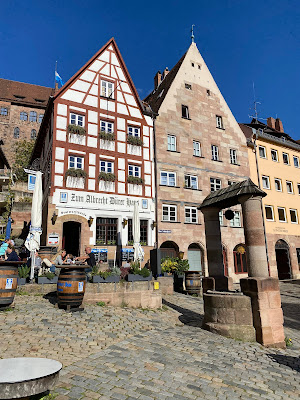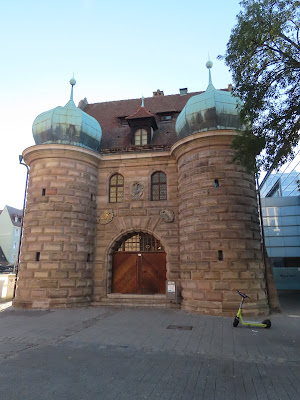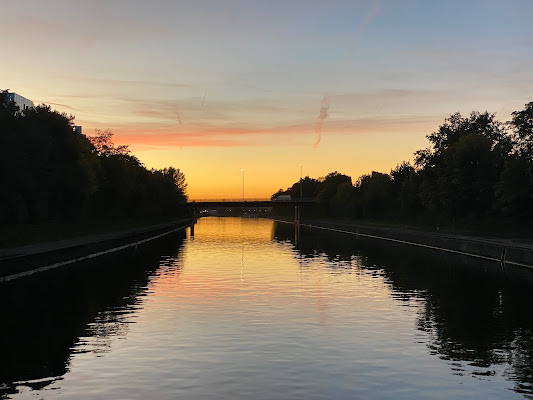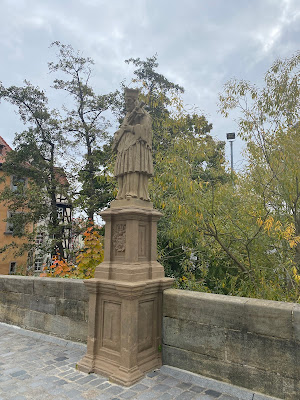Budapest to Amsterdam 2022
Rhine–Main–Danube Canal
Before we would get to the Main River, we had to traverse the Rhine–Main–Danube Canal. The RMD Canal is in Bavaria, Germany and connects the Main and the Danube rivers across the European Watershed, it runs from Kelheim via Nuremberg to Bamberg. The canal was completed in 1992 and is 171 kilometers (106 mi) long. Effectively the construction of this lock allowed ships to travel from the Black Sea to the North Sea and the Atlantic Ocean.

There is 16 Locks that make up the RMD Canal, and three of those locks have drops of almost 25m (82ft). We had already traveled through 16 locks on the Danube, by the time we arrive in Amsterdam we will have passed through 68 locks total.







October 6
While we were sleeping, and a good chunk of the morning was spent moving from lock to lock. In order to keep us entertained we were given Ballroom dance lessons after lunch... There's no pictures of that, cause no-one needs to see that.


Nürmberg, Germany
Our first real stop on the Rhine Main Danube Canal was the city of Nürmberg, they had to bus us into the city as we are docked in an industrial area. Nürmberg is the second-largest city in Bavaria after its capital Munich.Today would be a walking tour after the bus dropped us off near the Imperial Castle.
During the Middle Ages, the Imperial Castle atop the rocky promontory above Nuremberg was one of the most important fortified imperial palaces of the Old Holy Roman Empire. From 1050 to 1571, all Holy Roman Emperors resided at some point in the Imperial Castle. An archeological exploration of the grounds of the castle has revealed remains of a fortress from before 1000 AD.











From the Castle it is a fairly direct downhill path into the old town and it's wide range of architectural styles.





In the old town square area there is an old medieval well, pretty sure they don't use it any more.





This scary sculpture of a giant hare is portrayed as having fallen hard upon and smashed open a wooden box from which spills a horde of numerous tiny and demonic-looking rabbits. Look closely and you will see that crushed beneath this heavyweight hare lies a person, whose lifeless hand can be seen outstretched from beneath the hare. Created in 1984 by the artist Jurgen Goertz the sculpture has often been labeled by its detractors as being “one of the world’s ugliest pieces of public art.”


The construction of St. Sebaldus began in 1225. the church achieved parish church status in 1255 and was completed by 1273–75. It was originally built as a Romanesque basilica with two choirs. During the 14th century several important changes to the construction were made: first the side aisles were widened and the steeples made higher (1309–1345), then the late gothic hall chancel was built (1358–1379). The two towers were added in the 15th century.
















And just like so many other towns, there was some signs that I liked.







Schöner Brunnen fountain and Frauenkirche Church, both constructed during the14th Century.









Church






The Pegnitz river that divides the old town area of the city provides some nice views and has some nice historic bridges.





Lorenzkirche (St. Lorenz Church) is a Gothic church building, construction of the three-aisled basilica began around 1250, the late Gothic hall choir was completed in 1477.








Apparently Nürmberg and Regensburg have a competition about who has the best sausages/bratwurst. I have now tried both, and Regenesburg's Giant Bratwurst is the winner.That gave me enough energy to go look through some shops.














Oriel or Bay Windows were very popular in Nürmberg as not only did it increase the space in a home, but it also added a level of prestige without changing how much tax you had to pay.








Our Cruise Director Igor  Volha, Norine, and Anastasia
Volha, Norine, and Anastasia
Love to see our crew members out and about enjoying time off the ship. We would usually run into them when it was time to go back to the ship.I guess that means it's time to go back to the ship.


It's very convenient to have a TV channel solely dedicated to the view at the front of the boat.So when something interesting is coming, you can run up and get a picture.


Tonight we skipped the lame entertainment after dinner and called it an early night with no bar time.
October 7
Bamberg, Germany
When I said that Nürmberg had an industrial port, I was wrong, this port is a true industrial area, so we are back on a bus into town.


Today was a walking tour of Bamberg, a UNESCO town dating back to the 9th century.





The Michelsberg monastery is undergoing renovations, but still an impressive building from the 10th century.It is now being used as a retirement home for the elderly folks of Bamberg.










Note the engraving indicating what will happen to thieves











We wound our way through the historic city streets to the Bamberger Dom. The Cathedral of Bamberg is a historical and beautiful building with 4 towers... each built in different eras; Baroque, Gothic, Romanesque, and Renaissance.

























Outside the cathedral and behind a wall is a literal courtyard, a historic square surrounded by flower covered buildings that are the site of the historic courts of Bamberg.




The Neue Residenz is a 17th century palace, we didn't go inside, but we did check out the rose garden.







From the gardens you had great views over the city.





Today we learned about the Stolpersteine (in English: “stumbling stones”) scattered throughout Europe, planted in the streets and sidewalks are commemorative brass plaques recognizing the lives that were lost in the great tragedy of the 20th century. The shiny bronze plaques commemorate the victims of the Nazi regime in more than 1,100 locations in 17 European countries. More than 70,000 of these stones are solidly rooted across cities in Europe. The premise of the Stolpersteine is that people will stop and bow their heads to look at the brass plaques, honouring the victims that they stumble upon.


The Old Town Hall (Altes Rathaus Bamberg) is a medieval town hall standing on an artificial island in the middle of the Regnitz River, between the former episcopal and working (urban) districts. Legend has it that the Bishop of Bamberg did not give permission to the townspeople to build a town hall, and then the townspeople, by driving wooden piles, erected an artificial island between the two districts, on which the Bamberg Town Hall was erected in 1387. A bridge passes through the tower of the town hall. Therefore, the town hall is sometimes called the "Town Hall on the bridge".























Once we arrived at the main square of Bamberg, the walking tour was ended by our tour guide with the "Travel is fatal..." quote from Mark Twain. I love this quote!

From the square we were free to go wander the shops and street of Bamberg, we made good use of that time, finding some unique souvenirs.



As always in a historic town like Bamberg, there was a wide range of shops with signs.



















I had one last shopping destination, the historic smoked beer brewery Schlenkerla, dating back to 1405. I bought a 6 pack of the famous smoke beer from a small window in the back of a very busy pub.


A great many stories have grown up around the origins of Smoked Beer. In an oft told legend, when a brewery in Bamberg burned in the Middle Ages, the malt was smoked accidentally. As unexpectedly, Bamberg's citizens enjoyed the flavor of the resulting brew, thereafter, the technique was applied on purpose.


Back on the boat,we are now leaving Bamberg, and officially have joined the Main River.


